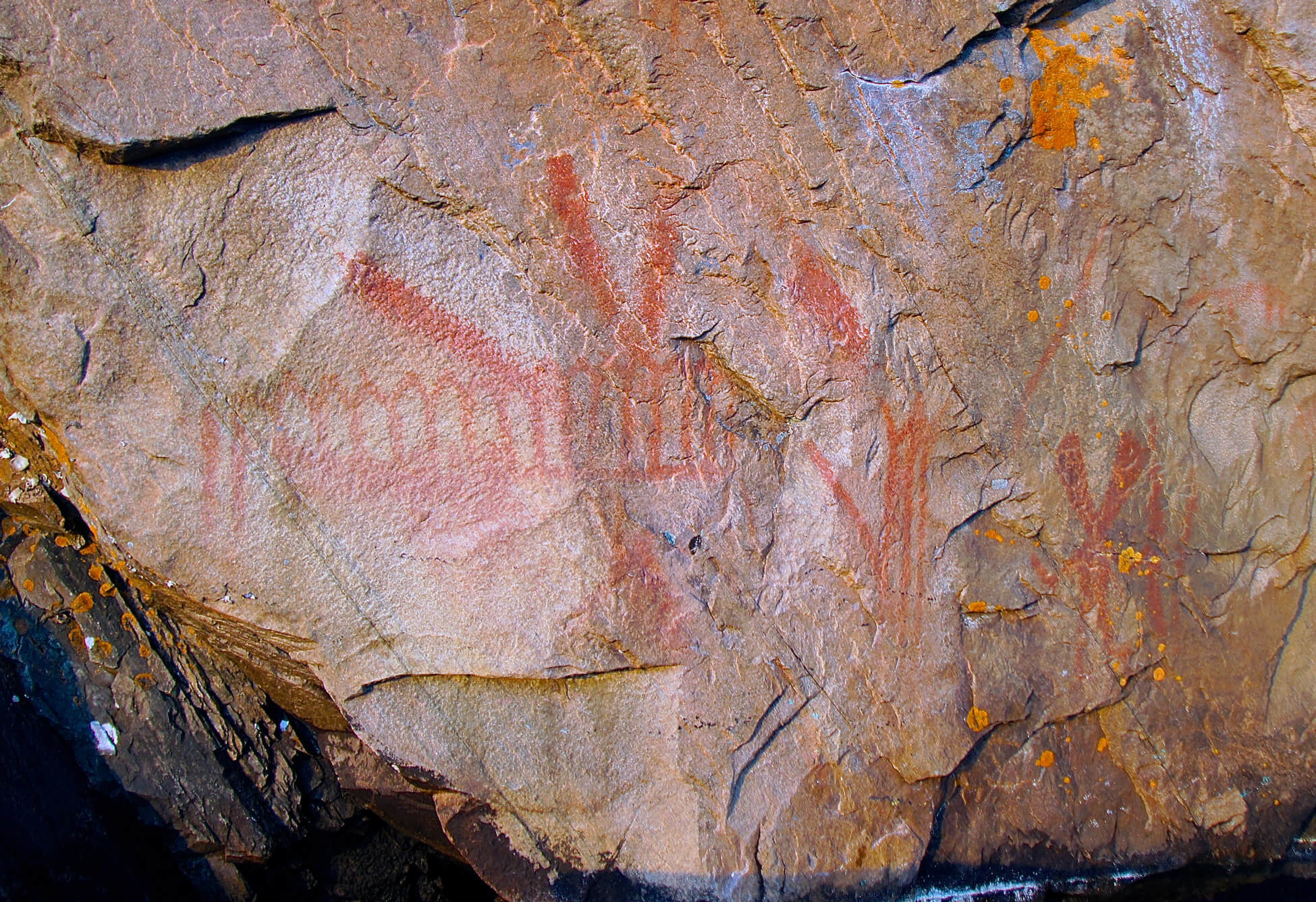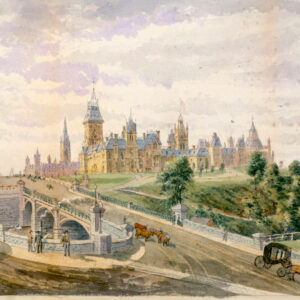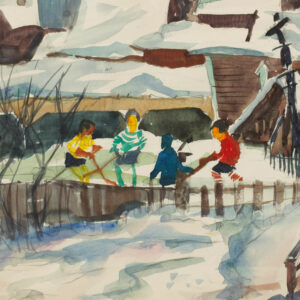Unknown Anishinābe Artists

Pictographic representations found at Mazinaw Lake, Bon Echo Provincial Park, Kaladar, Ontario, date unknown
Red ochre
At Bon Echo Provincial Park in Eastern Ontario, visitors can view (with some difficulty) a series of pictographs by an unknown Indigenous artist. Painted in red ochre on rock, they seem to depict animals—perhaps creatures from Anishinābe mythology. It has been speculated that these works may have been made by shamans, whose healing and prophetic powers are often represented in this way. Equally, they may also have served as warnings of territoriality.
These pictographs are among the earliest surviving artworks in the Ottawa region, and they represent one aspect of the Anishinābe cultural heritage. The Anishinābe peoples possess a rich artistic tradition, seen through petroglyphic and pictographic representations; the arts of needlework, weaving, and ceramics; and technologies of aesthetic achievement. Although little survives from the pre-contact period, certain objects provide some notion of this abundance of creativity.
The arrival of European settlers affected Anishinābe culture significantly by introducing new materials (cloth, beads, iron, silver) and tools (needles, awls, knives). Still, long-used patterns of decoration, semiotic representations, and designs persisted. As Professor Ruth Phillips has noted, “the visual arts of the Anishinabeg who have inhabited the Ottawa-Gatineau region for many millennia speak of creativity and continuity, innovation and loss.”
-
Sarah Lavalley, Moccasins, before 1972
Moosehide, beads, 9 x 27.5 x 12 cm
Canadian Museum of History, Gatineau -
Samuel Dubé, Wìgwàs wìgwemad màmawe anìbìsh mazinàdahigan, birchbark basket with leaf motif, date unknown
Birchbark, spruce root, leather, 34.5 x 22 x 33.3 cm
Kitigan Zibi Collection -
Unknown artist from Kitigan Zibi, Armband, before 1913
Silver, 8 x 37 cm
Canadian Museum of History, Gatineau
From the graceful curvature of a birchbark canoe to the organic beauty of floral beadwork patterns on moccasins, jackets, and other clothing, Anishinābe creativity is clear. The making of garments and household tools in Indigenous culture was enlivened by the many anonymous artists who embroidered jackets, mittens, and footwear with quillwork (and later beadwork) patterns representing naturalistic and geometric designs. These traditions were carried on into the twentieth century by such practitioners as Catherine Makateinini (Michel) (1871–1916) of Kitigan Zibi and Sarah Lavalley (1895–1991) of Pikwàkanagàn. Birchbark containers used in daily life were incised with similar naturalistic designs using cutting tools or patterns bitten in the bark. William Commanda (1913–2011) of Kitigan Zibi and Matthew Bernard (1876–1972) of Pikwàkanagàn kept Indigenous building traditions alive. Indigenous artists also worked with metal to create armbands and other accessories in both the pre- and post-contact periods.
In recent years, artists have continued to engage with these traditions in new art forms, with Ron Noganosh (1949–2017) (Ojibwe) and Barry Ace (b.1958) (Odawa) providing powerful examples. Such work represents the inherent desire that all societies possess to create beautiful objects and to represent ideas in innovative ways.

 About the Author
About the Author
 More Online Art Books
More Online Art Books
 Acknowledgements
Acknowledgements